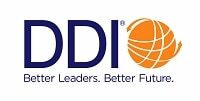Sharlyn J. Lauby's Blog, page 26
February 20, 2024
Labor Law Requirements for Hybrid and Remote Workers

Estimated reading time: 7 minutes
(Editor’s Note: Today’s article is brought to you by our friends at Poster Guard® Poster Compliance Service from HRdirect, the leading labor law poster service that gets your business up to date with all the required federal, state, and local labor law postings, and then keeps it that way – for an entire year. Enjoy the article!)
While we’re seeing news headlines about organizations having challenges bringing employees back to the workplace, there are many organizations embracing hybrid and remote work. According to EY’s Future Workplace Index, approximately 60% of companies are operating with a hybrid work model.
Embracing flexible work completely makes sense. There are many benefits for both employers and employees. For organizations, there’s a cost savings in rent, utilities, cleaning, equipment, etc. It can also create benefits in attracting talent. A Pew Research Center study says that about a third of U.S. workers who can work from home do so.
For employees, remote work can save money in terms of working attire, commute expenses, and childcare expenses. It can also positively contribute to overall wellbeing. And technology tools are allowing remote workers to still communicate, collaborate, and get work done.
But all this talk about remote work does raise the question, how do organizations communicate with employees when it comes to topics like labor law compliance postings. I know organizations need to be focused on getting the work done, but we also need to make sure all employees know their rights as required by federal, state, and local law.
We recently published an article about labor law posting requirements for remote employees, so I asked our friend Lillian Chavez, Esq., managing legal research attorney at ComplyRight for some additional insights. Lillian leads the expert legal team for the Poster Guard Compliance Service. Please remember that Lillian’s comments shouldn’t be construed as legal advice or as pertaining to any specific factual situations. If you have detailed questions, they should be addressed with your friendly neighborhood labor and employment law attorney.
Lillian, thanks for being here. Before we start talking about the posting requirements for remote employees. It might be good to discuss, in general, the current posting requirements for organizations.
[Chavez] Sure. All employers must post federal, state, and local (if applicable) postings. The mandatory federal notices that most employers are required to post include:
Employee Polygraph Protection Act (EPPA)Equal Employment Opportunity (EEOC) Fair Labor Standards Act (FLSA)Family and Medical Leave Act (FMLA)Occupational Safety and Health Act (OSHA)Uniformed Services Employment and Reemployment Rights Act (USERRA)In addition, there could be up to 19 additional state-specific posters, depending upon what state you’re in … and up to 11 additional posters for city/county compliance.
Oh, and don’t forget there are additional posters for government contractors and certain industries. The topics for these state, local, and industry-specific postings include child labor, fair employment, family/medical leave rights, human trafficking, minimum wage, safety, smoking in the workplace, unemployment insurance, workers’ compensation, and more.
For HR professionals who just read that list and are saying to themselves, “I have no idea if we have the right posters!” is there a government site that will tell them everything they need?

[Chavez] Unfortunately, there’s not a ‘one-stop shop’ where employers can get all the government-issued notices for federal, state, and local compliance. The postings are issued by multiple different government agencies. Very few of the agencies work together, so the only way to ensure compliance is to check each issuing agency’s requirements directly.
For federal and state posters, there are about 175 different agencies responsible for issuing more than 500 posters nationwide. Add to that the approximately 22,000 local jurisdictions that have the authority to issue their own postings. That’s a lot of follow-up and unfortunately, these agencies aren’t required to coordinate efforts.
Okay, so potentially HR professionals have several many a lot of sites to check. But do labor law posters really change that often?
[Chavez] Surprisingly, they do. Our Poster Guard legal team monitors posting changes and has reported a significant increase over the past few years. In 2023, the team tracked more than 200 mandatory poster updates impacting U.S. employers, and this number is expected to increase in 2024 as state and local employment laws continue to evolve at a record pace. Most employers are aware of poster updates relating to minimum wage increases, but other poster changes are just as critical. It can be a challenge to stay on top of all these updates because the government agencies don’t notify employers when requirements change. Also, be aware that mandatory posting changes are issued throughout the year, not just in January.
Let’s shift our conversation to remote workers. How do current labor law posting requirements impact them?
[Chavez] By law, you’re required to provide these mandatory notices to ALL employees. That includes employees who work from home, offsite, on the road, at mall kiosks, in mobile service units, out in the field, at construction checkpoints, and other remote worksites.

Does this mean that HR departments need to send remote workers full-size laminated posters to hang in their spare bedrooms/home office?
[Chavez] No, but it does mean that employees need to receive notices. Although the regulations don’t specify the format — paper or electronic — organizations are responsible for communicating the same information to their remote workers as those onsite. For employees who work on computers as part of their jobs, the most effective way to distribute the posters is through electronic delivery. We recommend using a solution that enables your employees to download, view, and acknowledge receipt of all required postings and posting updates. This satisfies your obligation to communicate their rights, and the acknowledgments provide additional support in the event of a dispute.
What other information do remote workers need to receive? For instance, if a company has remote employees who work in different states, which posting requirements should they follow? Those from the state where the company is headquartered or the state where the employee works?
[Chavez] Unfortunately, it’s not always clear which state laws apply in this instance. Most basic employment rights — such as minimum wage, overtime, and safety issues — are governed by the laws where the employee performs the work. However, depending on how your company is structured and the nature of work performed, your out-of-state employees may be covered by both states’ laws. Because it depends on so many factors, we recommend you provide remote workers with access to both sets of state-specific postings in this situation.
Hypothetically, what if an organization is offering a hybrid work schedule where employees primarily work from home, but they report to the office headquarters occasionally? Do they still need to send posters electronically?
[Chavez] FAQs published by the U.S. Department of Labor (USDOL) suggest that, if an employee reports to a company’s physical location at least 3-4 times a month, the physical postings at the business are adequate. If not, the USDOL recommends electronic delivery.
Last question. I could hear some people saying, “Labor law posters aren’t a big deal. If we don’t have them or don’t have the right ones, we’ll just get a warning.” What’s the penalty for businesses that aren’t in compliance?
[Chavez] Recently, the amount for federal posting fines increased to more than $42,000 per violation, per location. State and local fines typically range from $100 to $1000 each. Government fines can add up, but the real danger is with employment litigation. A missing or outdated posting can impact damages and can even ‘toll’ or extend the statute of limitations. And as your readers know, the statute of limitations can often be an employer’s best friend in defending claims, as this is the defense that allows you to have old claims dismissed and also limits damages in the case of repeated violations or class actions.
A HUGE thanks to Lillian for sharing her knowledge with us. If you want to learn more about how to make sure your posting requirements are up to date, I hope you’ll check out Poster Guard’s Poster Compliance Service. Today’s technology makes providing remote workers with their postings easy. They also guarantee their work against government posting fines. Organizations can also add on e-service for remote workers and an intranet licensing posting service.
Organizations must manage many priorities and compliance is one of them. It’s important to the organizational bottom-line. When employees – regardless of where they work – know that organizations are transparent about their rights, it creates trust and builds engagement.
The post Labor Law Requirements for Hybrid and Remote Workers appeared first on hr bartender.
February 18, 2024
The Problem With Making Things MandatThe – Ask hr bartenderg Things Mandatory �����–����������������� hr bartender Ask hr bartender hr bartender

Estimated reading time: 3 minutes
I recently received a note from a reader asking a straightforward question. “I’m working in an office with some manipulative people. I need to understand more about how to deal with this.”
It’s a fair question. At work and in life, we encounter all types of people. And some might be manipulative. Just to make sure we’re on the same page, manipulative means “unscrupulous control of a situation or person”. The key word here being unscrupulous. It is possible that we might want to influence someone but do it in a data-driven manner. That’s not unscrupulous unless you’re lying about the data. But I don’t want to get us off track.
If you’re looking for some insights about working with manipulative people, here are a few resources that might help.
How to Work with a Manipulative Person
This Harvard Business Review article offers some insights into why manipulative people might hold positions of responsibility as well as some suggestions for how to deal with a manipulative situation. My takeaway from the article is that if I feel I’m dealing with a manipulative person or situation, I need to consider what I’m willing to do.
How to Handle Manipulative Coworkers, Managers, and Clients Like a Pro
This article from the HubSpot blog did a great job of outlining manipulative behaviors. So, if you’re saying to yourself, “This interaction doesn’t feel right. But I don’t want to be accused of overreacting.”, this article might offer some perspective. One of the things I appreciated in this article was the reality check that dealing with manipulative behaviors is something we will have to occasionally face. So we need to get comfortable with knowing how to manage the situation.
If you’re faced with a manipulative coworker or manager, it’s important to realize that you don’t have to deal with the issue alone. A manipulative colleague can be toxic to the workplace. A few years ago, I interviewed employment attorney Kate Bischoff about a workplace bullying situation. I hope you’ll check out the article. It’s a good reminder that if employees need someone to talk with, the human resources department can help. And they can also investigate matters of inappropriate behavior.
The bottom-line is that sometimes we work with people who say and do not-so-nice things. Sometimes we can chat with the person, explain our point of view, and move on without another incident happening again. Other times, we might need help because the person who is being manipulative is the boss or a leader in the organization. Or we need help because the situation has gotten a little out of control. If that’s the case – get some help. Talk to human resources or if your organization has a ombudsperson, reach out to them.
Hopefully, organizations and individuals can deal with manipulative situations and the persons involved. Unfortunately, if they are not, employees who feel that they are being manipulated might have to consider other options like moving to a different team … or even a different organization.
Images captured by Sharlyn Lauby while exploring the streets of West Palm Beach, FL
The post How to Work with Manipulative People – Ask hr bartender appeared first on hr bartender.
How to Work with Manipulative People – Ask hr bartender

Estimated reading time: 3 minutes
I recently received a note from a reader asking a straightforward question. “I’m working in an office with some manipulative people. I need to understand more about how to deal with this.”
It’s a fair question. At work and in life, we encounter all types of people. And some might be manipulative. Just to make sure we’re on the same page, manipulative means “unscrupulous control of a situation or person”. The key word here being unscrupulous. It is possible that we might want to influence someone but do it in a data-driven manner. That’s not unscrupulous unless you’re lying about the data. But I don’t want to get us off track.
If you’re looking for some insights about working with manipulative people, here are a few resources that might help.
How to Work with a Manipulative Person
This Harvard Business Review article offers some insights into why manipulative people might hold positions of responsibility as well as some suggestions for how to deal with a manipulative situation. My takeaway from the article is that if I feel I’m dealing with a manipulative person or situation, I need to consider what I’m willing to do.
How to Handle Manipulative Coworkers, Managers, and Clients Like a Pro
This article from the HubSpot blog did a great job of outlining manipulative behaviors. So, if you’re saying to yourself, “This interaction doesn’t feel right. But I don’t want to be accused of overreacting.”, this article might offer some perspective. One of the things I appreciated in this article was the reality check that dealing with manipulative behaviors is something we will have to occasionally face. So we need to get comfortable with knowing how to manage the situation.
If you’re faced with a manipulative coworker or manager, it’s important to realize that you don’t have to deal with the issue alone. A manipulative colleague can be toxic to the workplace. A few years ago, I interviewed employment attorney Kate Bischoff about a workplace bullying situation. I hope you’ll check out the article. It’s a good reminder that if employees need someone to talk with, the human resources department can help. And they can also investigate matters of inappropriate behavior.
The bottom-line is that sometimes we work with people who say and do not-so-nice things. Sometimes we can chat with the person, explain our point of view, and move on without another incident happening again. Other times, we might need help because the person who is being manipulative is the boss or a leader in the organization. Or we need help because the situation has gotten a little out of control. If that’s the case – get some help. Talk to human resources or if your organization has a ombudsperson, reach out to them.
Hopefully, organizations and individuals can deal with manipulative situations and the persons involved. Unfortunately, if they are not, employees who feel that they are being manipulated might have to consider other options like moving to a different team … or even a different organization.
Images captured by Sharlyn Lauby while exploring the streets of West Palm Beach, FL
The post How to Work with Manipulative People – Ask hr bartender appeared first on hr bartender.
February 15, 2024
The Problem With Making Things MandatThe – Ask hr bartenderg Things Mandatory �����–����������������� hr bartender Ask hr bartender

Estimated reading time: 4 minutes
I recently heard a conversation about requiring employees to be “on camera” during an upcoming video call. The leader’s reasoning was that the content was important, and they wanted everyone to participate, so being on camera was going to be mandatory. What was interesting to me is when it came time for the meeting, no one was on camera. No one. Including the leader who said that they were going to make it mandatory to be on camera!
I’ve experienced the same thing when it comes to in-person training events. Someone is complaining about having to be there. So, the reply is to make it mandatory.
I know it’s tempting to make things mandatory. As a human resources professional, I’ve participated in my fair share of “Should we make this training/conference/event, etc. mandatory?” conversations. And what I’ve realized over the years, is that making something mandatory doesn’t hold people accountable.
In both our professional and personal lives, we have to establish priorities. We need to make decisions about the best way to spend our time. This is an important skill.
Employees often have multiple meetings to attend and need to choose the right one. Honestly, the employee shouldn’t have to ask their boss. They should know the most important one that demands their time. The only time this doesn’t apply is if it’s possible to use a “divide and conquer” strategy for attending a meeting or event. Then the employee would strategically coordinate schedules with their colleagues and debrief afterward.Managers should know when it’s acceptable to pitch going to that conference in Las Vegas that they really want to attend versus staying in the office to complete the project that needs to get done. The boss shouldn’t have to be a bad person and tell them “no”.Consultants and freelancers need to know the right events to attend so they meet decision makers and network with a good group of professionals. They can’t attend everything so they must go to the right things. Years ago, I had a boss who always seemed to know the right events to attend. I remember that when I’m making decisions today. “Would they go? If so, why?”While making events mandatory comes with some grousing and grumbling, it also prevents people from learning how to make the critical decision of where to be and when. If people aren’t attending what should seem like an obvious “go-to” event, the organization need to find out why. If employees don’t know how to evaluate priorities when it comes to things like meetings and turning their camera on, then is the organization confident that they will make the right call when it comes to the operation?
In my experience, I’ve found that mandatory things don’t get the same level of explanation as optional ones. For example, all employees need to attend XYZ training session. So, the program description is dull. The materials are boring. And so forth… When nothing is labeled mandatory, the organization must explain in detail why it’s important and get employees to understand it’s importance (without calling it mandatory). And that can take extra work.
This includes free stuff. Just because something is free, doesn’t mean it’s a “must-do”. I’ve been to plenty of free snoozefests and I’m sure you have too. Free must have value because people’s time is valuable, and they are making their participation a priority.
If you must use the word “mandatory”, maybe save it for decisions related to laws and safety. For the rest, focus on creating interest and providing value. Then coach employees to manage their commitments and make good decisions.
Image captured by Sharlyn Lauby while exploring the streets of San Diego, CA
The post The Problem With Making Things Mandatory – hr bartender appeared first on hr bartender.
The Problem With Making Things Mandatory – hr bartender

Estimated reading time: 4 minutes
I recently heard a conversation about requiring employees to be “on camera” during an upcoming video call. The leader’s reasoning was that the content was important, and they wanted everyone to participate, so being on camera was going to be mandatory. What was interesting to me is when it came time for the meeting, no one was on camera. No one. Including the leader who said that they were going to make it mandatory to be on camera!
I’ve experienced the same thing when it comes to in-person training events. Someone is complaining about having to be there. So, the reply is to make it mandatory.
I know it’s tempting to make things mandatory. As a human resources professional, I’ve participated in my fair share of “Should we make this training/conference/event, etc. mandatory?” conversations. And what I’ve realized over the years, is that making something mandatory doesn’t hold people accountable.
In both our professional and personal lives, we have to establish priorities. We need to make decisions about the best way to spend our time. This is an important skill.
Employees often have multiple meetings to attend and need to choose the right one. Honestly, the employee shouldn’t have to ask their boss. They should know the most important one that demands their time. The only time this doesn’t apply is if it’s possible to use a “divide and conquer” strategy for attending a meeting or event. Then the employee would strategically coordinate schedules with their colleagues and debrief afterward.Managers should know when it’s acceptable to pitch going to that conference in Las Vegas that they really want to attend versus staying in the office to complete the project that needs to get done. The boss shouldn’t have to be a bad person and tell them “no”.Consultants and freelancers need to know the right events to attend so they meet decision makers and network with a good group of professionals. They can’t attend everything so they must go to the right things. Years ago, I had a boss who always seemed to know the right events to attend. I remember that when I’m making decisions today. “Would they go? If so, why?”While making events mandatory comes with some grousing and grumbling, it also prevents people from learning how to make the critical decision of where to be and when. If people aren’t attending what should seem like an obvious “go-to” event, the organization need to find out why. If employees don’t know how to evaluate priorities when it comes to things like meetings and turning their camera on, then is the organization confident that they will make the right call when it comes to the operation?
In my experience, I’ve found that mandatory things don’t get the same level of explanation as optional ones. For example, all employees need to attend XYZ training session. So, the program description is dull. The materials are boring. And so forth… When nothing is labeled mandatory, the organization must explain in detail why it’s important and get employees to understand it’s importance (without calling it mandatory). And that can take extra work.
This includes free stuff. Just because something is free, doesn’t mean it’s a “must-do”. I’ve been to plenty of free snoozefests and I’m sure you have too. Free must have value because people’s time is valuable, and they are making their participation a priority.
If you must use the word “mandatory”, maybe save it for decisions related to laws and safety. For the rest, focus on creating interest and providing value. Then coach employees to manage their commitments and make good decisions.
Image captured by Sharlyn Lauby while exploring the streets of San Diego, CA
The post The Problem With Making Things Mandatory – hr bartender appeared first on hr bartender.
February 13, 2024
For Productivity, Engage Team Members with Emotional Intelligence

Estimated reading time: 6 minutes
(Editor’s Note: Today’s article is brought to you by our friends at DDI , a global leadership firm that helps organizations hire, promote, and develop exceptional leaders. For the seventh year in a row, Training Industry named DDI to its top assessment and evaluation companies list. Congrats to them and enjoy the read!)
A couple of weeks ago, I published an article about “3 Proven Ways to Make New Team Members Feel Welcome and Included”. Since then, I’ve been thinking about the article, and it reminds me that welcoming a new team member is only the first step. Once the team is together, they need to be engaged.
When it comes to creating employee engagement, leaders play an important role. But we need to remember that team members also share in that responsibility.
Employee Engagement: DefinedFirst, to make sure we’re on the same page, let’s do a quick refresher on engagement. According to Investopedia, engagement describes the level of enthusiasm and dedication someone has for their work. I don’t want to do a deep dive into a bunch of statistics, but engagement drives several key business indicators such as lower absenteeism, fewer workplace accidents and incidents, lower turnover, less shrinkage, better quality, increased productivity, and of course, profitability.
Bottom-line: engagement is important.
So, the question becomes how can organizations take an honest look at employee engagement? I recommend exploring the following questions:
Is employee performance high? Are employees offering suggestions to make processes better or fix problems? Are employees open to new ideas and changes?If the answer to any of these questions is “no”, then maybe the organization needs to examine their engagement levels.
How Organizations Can Create Employee EngagementNow that we’ve reviewed engagement and its impact on the organization, it’s time to talk about how to create it. And maybe the best place to start is by saying employee engagement isn’t a program run by the human resources department.
Engagement happens when it’s a part of the organizational culture. Employees will be enthusiastic and dedicated to their work when they are trusted and treated with respect.
I’ve been a part of teams – and maybe you have too – where the team leader was great, but the other members of the team were rude and gossipy. I was cautious about what I did and what I said because I didn’t trust them. After the meeting, I would chat with the team leader because I trusted the leader. This type of arrangement doesn’t help anyone.
I’ve also been on the other side – teams where I loved the other people that I was working with, but the team leader had their own agenda, which didn’t really include us. So, you weren’t always sure if the team leader was going to take your suggestions and make them their own.
The reason I’m spending this time to set up what engagement is and why it’s important is two-fold: 1) sometimes when a term like engagement becomes a catch-all, it’s necessary to step back and reexamine what it means, and 2) because it’s important to remember that everyone plays a role in engagement.

I believe a good place to start addressing engagement is with emotional intelligence. Emotional intelligence is our capacity to be aware of, control, and express our emotions. The five core components of emotional intelligence include: empathy, effective communication, self-awareness, self-regulation, and motivation. Think about the couple of team examples I just shared.
If the rude and gossipy team members had improved self-regulation, is it possible they would be better colleagues? And while I had a good relationship with the team leader, if the leader’s communication skills were improved, would they be able to facilitate bringing the team together?
Same goes for the other team. If the team leader with an agenda was more self-aware, would they realize that they were hurting the team and adjust their behavior. And if the team members had better communication skills, could they share their concerns directly with the team leader?
Our interactions as leaders can have a profound impact on others. It also has a direct bearing on team results. And that’s the purpose of today’s article. Emotional intelligence drives team engagement. Engaged teams get stuff done, which allows the organization to accomplish their goals.
Team Leaders Have Extra ResponsibilitiesAt the beginning of this article, I mentioned that team leaders and participants are both responsible for engagement … and that’s true.
But team leaders are entrusted with extra responsibility. Because they have the ability to encourage or discourage, to build trust or to break it. DDI’s research has found these four behaviors effective at driving higher levels of engagement:
Listening and responding with empathy (understanding others’ emotions).Maintaining trust with employees.Encouraging others to challenge old ways of doing things.Providing opportunities for team members to gain visibility.Here’s just one example of how this might look in the workplace. When managers spend time listening and responding with empathy during one-on-one meetings, this helps to build and maintain trust with employees. Then, when managers encourage employees to challenge the old way of doing things, they feel comfortable doing so. And that opens the door to share these new ideas with others, giving credit to the employee for coming up with the idea.
And for the employee, this can create visibility in the organization, which could lead to working on a special project, being selected to participate in a training program, or even contribute to eventually getting a promotion.
As I’ve said before, my prediction is that this year is going to be all about teams. Simply putting people in a room isn’t building a team. And naming someone a team leader doesn’t guarantee team results. If organizations want to get things done – and we all know they do – then they need to set teams up for success. That involves giving team members, and especially your leaders, the tools they need to engage, which starts with emotional intelligence.
P.S. If you’re looking for a way to get started with emotional intelligence and leadership development, our friends at DDI can help. Get started by exploring the Ultimate Guide to Leadership Development for insightful recommendations to help you create and launch powerful leadership development experiences.
The post For Productivity, Engage Team Members with Emotional Intelligence appeared first on hr bartender.
February 11, 2024
What Is IN / OUT in the Year Ahead? Start Creating Artificial Intelligence Experiments

Estimated reading time: 3 minutes
Artificial intelligence (AI) is dominating today’s news cycles. What companies are using AI? What is this person or that person saying about the future of AI? What snafu did AI do lately? Don’t get me wrong. These articles can be helpful in understanding AI and its capabilities.
But the other thing that can be helpful is actually working with it.
One of my goals for this year is to take my own advice and create a little “lab” when it comes to artificial intelligence. A few weeks ago, I mentioned in / out lists in an HR Bartender article. So, I decided to ask ChatGPT what would be in / out in the year to come. I received two lists: one for pop culture and the other for business. I thought it would be fun to share some of the list here and we can see later toward the end of the year how good the predictions were.
Let’s start with the pop culture list. Here are five things that will be “in” for 2024.
Inclusive fashionDystopian and science fiction themesRetro gamingTrue crime podcastsSuperhero franchisesAnd on the “out” list for 2024 will be …
Sneaker cultureFast fashionPrint magazines, especially celebrity gossip onesReboots and remakesReality TVI must admit that at first glance some of these appear to be spot on like the predictions about fashion and podcasting / print magazines. Not sure about superheroes and reboots, so that will be interesting to watch.
On the business side, here’s what AI predicts to be “in” for 2024. Please note: I’m not including artificial intelligence on the “in” list even though ChatGPT said it would be “in”.
SustainabilityRemote learning and upskillingHealth and wellnessCybersecurity investmentseCommerceAnd here’s what will be “out” …
Legacy softwareOrganizational hierarchies and silosOveremphasis on short-term profitsIgnoring social mediaLong commutesLike the pop culture lists, there are some predictions that I can definitely see happening like cybersecurity and wellness. But I’m not so sure about the overemphasis on short-term profits or ignoring social media.
The reason for today’s post is two-fold. First, I thought the lists were kinda interesting and wanted to share. It will be fun to watch which – if any – of these predictions take hold and to what extent. And second, it’s to encourage people to find ways to use artificial intelligence. Start out with fun stuff and then move to something more.
There will come a time when the organization will be faced with making technology decisions that include artificial intelligence. The organization will be able to ask good questions and ultimately make good decisions. Creating your own little “lab” experiments can help you prepare.
Image captured by Sharlyn Lauby after speaking at the SHRM Annual Conference in Las Vegas, NV
The post What Is IN / OUT in the Year Ahead? Start Creating Artificial Intelligence Experiments appeared first on hr bartender.
February 8, 2024
Make the Employee Experience Easy to Buy, Use, and Share

Estimated reading time: 3 minutes
I must admit that I was a late adopter to the concept of paying for stuff with your watch (i.e., Apple Pay or Google Pay type services). But during the pandemic, I had to learn how to use it and now, I’m a fan. Primarily because it makes things “easy to buy and easy to use”.
When I worked in hospitality, we would mention during customer service training that mantra of making things “easy to buy and easy to use”. It was all about making the customer experience (yes, you guessed it) easy and effortless. We talked about reducing barriers to purchase, speeding up delivery of the product, making upselling suggestions, and finding ways to educate customers about how to use the product effectively.
I still remember that mantra today. It’s frustrating sometimes how hard it is to give organizations money. When I’m frustrated with a customer experience, I find myself saying, “I’m trainable and trying to be a good customer. Tell me what I’m supposed to do.”
The same is true with the employee experience. It should be “easy to buy and use” as well. And in today’s technology driven society; it might make sense to add “easy to share”. Here’s how we can apply the “easy to buy and use” concept to the employee experience.
“Easy to buy” means having a company culture where employees feel they are welcomed, valued, and supported. It’s about employees “buying into” the organization. Granted, no company is perfect, but that doesn’t mean employees can’t feel like they are an integral part of the operation and a contributor to the bottom-line.
“Easy to use” refers to creating policies and procedures that help move the organization forward. It’s about only creating policies when necessary. And those policies or guidelines can be easily located and understood. I believe most employees understand that workplace rules are necessary and important. We just have to be careful not to overdo it.
“Easy to share” is focused on designing a company culture and workplace rules that can be explained by anyone. When I think of new hire buddy programs, it occurs to me that for them to be successful, employees need to be able to explain those unwritten rules to each other. If the only people who can answer questions are HR and management, there might be a problem.
Employees have choices when it comes to their jobs. If they like the experience, then they will stay. And if they don’t, well…then they’ll probably leave. Organizations should consider have a focused conversation about their employee experience, so employees choose them. And that choice should be easy to make.
Image captured by Sharlyn Lauby while exploring the streets of Orlando, FL
The post Make the Employee Experience Easy to Buy, Use, and Share appeared first on hr bartender.
Make the Employee Experience Easy to Buy, Use and Share

Estimated reading time: 3 minutes
I must admit that I was a late adopter to the concept of paying for stuff with your watch (i.e., Apple Pay or Google Pay type services). But during the pandemic, I had to learn how to use it and now, I’m a fan. Primarily because it makes things “easy to buy and easy to use”.
When I worked in hospitality, we would mention during customer service training that mantra of making things “easy to buy and easy to use”. It was all about making the customer experience (yes, you guessed it) easy and effortless. We talked about reducing barriers to purchase, speeding up delivery of the product, making upselling suggestions, and finding ways to educate customers about how to use the product effectively.
I still remember that mantra today. It’s frustrating sometimes how hard it is to give organizations money. When I’m frustrated with a customer experience, I find myself saying, “I’m trainable and trying to be a good customer. Tell me what I’m supposed to do.”
The same is true with the employee experience. It should be “easy to buy and use” as well. And in today’s technology driven society; it might make sense to add “easy to share”. Here’s how we can apply the “easy to buy and use” concept to the employee experience.
“Easy to buy” means having a company culture where employees feel they are welcomed, valued, and supported. It’s about employees “buying into” the organization. Granted, no company is perfect, but that doesn’t mean employees can’t feel like they are an integral part of the operation and a contributor to the bottom-line.
“Easy to use” refers to creating policies and procedures that help move the organization forward. It’s about only creating policies when necessary. And those policies or guidelines can be easily located and understood. I believe most employees understand that workplace rules are necessary and important. We just have to be careful not to overdo it.
“Easy to share” is focused on designing a company culture and workplace rules that can be explained by anyone. When I think of new hire buddy programs, it occurs to me that for them to be successful, employees need to be able to explain those unwritten rules to each other. If the only people who can answer questions are HR and management, there might be a problem.
Employees have choices when it comes to their jobs. If they like the experience, then they will stay. And if they don’t, well…then they’ll probably leave. Organizations should consider have a focused conversation about their employee experience, so employees choose them. And that choice should be easy to make.
Image captured by Sharlyn Lauby while exploring the streets of Orlando, FL
The post Make the Employee Experience Easy to Buy, Use and Share appeared first on hr bartender.
February 6, 2024
5 Scenarios When You Should Consider a Third-Party Investigator

Estimated reading time: 5 minutes
(Editor’s Note: Today’s article is brought to you by our friends at Case IQ , a leading provider of case management solutions that helps companies manage the process and workflow of investigators collecting and analyzing information related to a case, with the goal of resolving issues, managing risk, and identifying opportunities for improvement. Enjoy the read!)
One of HR’s responsibilities is to manage workplace investigations. Some people might think that having nothing to investigate is the ideal situation. And I get it. Investigations can signal there’s a concern or a problem that needs to be addressed. It would be great if the issue never happened in the first place. However, another way to look at it is that investigations give us an opportunity to fix something. And put the pieces in place so it will not happen again.
When we’re presented with a concern that requires investigation, a question we need to ask ourselves is “Who should be the investigator?”. Just because we’re in HR doesn’t mean we should always be the person who investigates. It could make sense to engage with an outside third-party. For instance, there are consultants who specialize in workplace investigations and some law firms will conduct investigations for their clients.
Reasons to Engage with a Third-Party InvestigatorHere are a few scenarios where it might make sense to use someone else as an investigator.
We don’t have the proper training. When it comes to training, there are two things to consider. First, do we have the proper training to conduct investigations? If you’re looking for training or a refresher, the Society for Human Resource Management (SHRM) offers a one-day Leading Workplace Investigations seminar. You can also earn SHRM’s Workplace Investigations Specialty Credential.
The other aspect to consider is knowledge of the topic. For example, someone might be qualified and experienced to conduct a harassment investigation but not have enough background knowledge to investigate allegations of fraud.
It would be perceived as a conflict (even if it’s not). If we want the organization to respect the process and outcome, then sometimes we have to consider perceptions. This does not mean we’ve done anything wrong. For example, if we’ve recently conducted an investigation that included a witness (let’s call them Leonard) and now there are concerns about Leonard, it might make sense for HR not to lead the investigation.
It involves a senior executive or board member. There are positions in the organization that, should they become a part of an investigation, it might be better to have a third-party conduct the investigation. It’s possible that HR has a reporting relationship to the executive, or they work with board members on projects.
There’s additional risk. Okay, how do I say this … some investigations sound very complex like they are destined to go to court from the beginning. This doesn’t mean we’re supposed to change our process. But it’s possible based on the nature of the investigation that we would consult legal counsel early and regularly.
If that’s the case – that we would be working with legal counsel throughout the process – then we need to ask ourselves if it would be better to have a third-party conduct the investigation.

We’re just too busy. Investigations take time and they need to be a priority. If the HR team has other priorities – that cannot be shifted to another team or delayed – then using a third-party to investigate could make sense. An example might be HR is working on annual open enrollment. It’s a busy time, employees have lots of questions, and the timeline can’t be altered. It’s hard to find someone else to conduct open enrollment, so we find someone else to handle the investigation.
Managing a Third-Party InvestigatorNow, if the decision is made to use an outside third-party that doesn’t mean we can sit back and forget about the investigation. It simply means our role is different. Here are a few things we need to do even when someone else is conducting the investigation.
Document the reason that you’re using a third-party in case you get asked questions later. This is a great use of your case management software. You can document the investigator selected and why you chose them. In fact, it could be interesting to track investigations by the investigator to identify trends.Communicate to key individuals who will be conducting the investigation and ask for their cooperation. The last thing an outside investigator needs is someone undermining the process. Part of our role is ensuring an ethical investigation. In Season 3 of The HR Bartender Show, I spoke with Meric Bloch, strategic advisor for Winter Investigations, about conducting ethical investigations. If you haven’t already, I hope you’ll listen to the episode. Provide the third-party investigator with information about the situation. Also provide them with knowledge of the company and the organization’s investigation process. They might need information about policies, procedures, etc. Be available to answer questions. And request regular updates from the investigator.Assist with facilitating the final recommendations. While the investigator might offer some suggestions or recommendations, the organization must ultimately decide how they will handle the matter. As HR, we have historical knowledge and working relationships within the organization.As I mentioned at the beginning of this article, one of HR’s responsibilities is to manage workplace investigations. That doesn’t mean we have to always conduct them. It could make sense to utilize the services of a third-party. Then HR can manage the process.
P.S. If you want to learn more about the state of workplace investigations in today’s business environment, I hope you’ll listen to this panel discussion with me, Meric Bloch from Winter Investigations, and Tom Fox with the Compliance Podcast Network. We spend some time talking about third-party investigators and HR’s role in the process.
The post 5 Scenarios When You Should Consider a Third-Party Investigator appeared first on hr bartender.
Sharlyn J. Lauby's Blog
- Sharlyn J. Lauby's profile
- 10 followers



